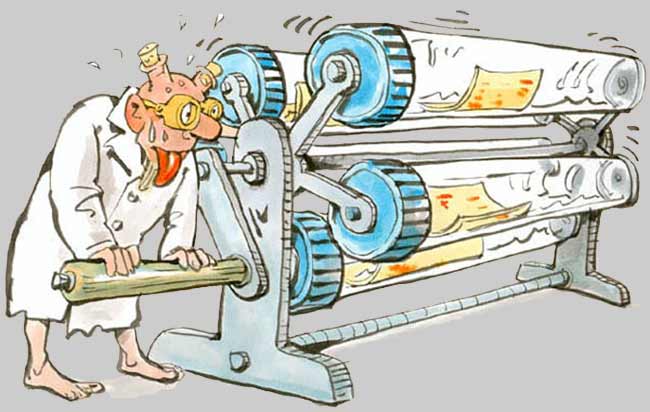|
Hybridisation |
|
|
|
HybridisationThe utility of nucleic acid hybridization is based on the original discovery by Watson and Crick that DNA is a double-stranded molecule held together by hydrogen bonds between complementary bases. Because of the complementarity of the two strands, denatured DNA derived from the same parent molecule can reanneal (or hybridize) under conditons of appropriate pH, temperature, and ionic strength. Nucleic acid hybridization is usually performed with target DNA that has been immobilized onto membranes (from Southern blots, by spot loading DNA onto membranes or after lysis of the bacterial colonies on a replica filter) and a probe in a liquid phase. In Southern blotting the DNA is usually denatured with alkali, so it is bound as single strands to the membrane and ready for hybridization. The labeled probe is usually double-stranded and has to be denatured before it is added. The blot with the DNA is hybridized to a labeled probe, washed extensively and then the hybridized probe must be detected (usually by autoradiography or immunological methods). The hybridization and washing conditions are critical. If the probe and target are 100% identical in sequence, then a high stringency hybridization can be carried out. The stringency is determined by the hybridization temperature and the salt concentration in the hybridization buffer (high temperature and low salt is more stringent as only perfectly matched hybrids will be stable). For probes that do not match the target completely (a less specific probe), the stringency must be reduced to a level that allows imperfect hybrids to form. If the stringency of the hybridization (or washing) is too low, then the probe may bind to too many sequences to be useful. All protocols employ a reagent to block non-specific attachment of the
probe to the membrane (i.e. to reduce so-called background
hybridisation signal). This blocking reagent may contain a
protein, such as casein from nonfat dried milk or bovine serum albumin,
often in combination with denatured, fragmented salmon sperm DNA (or any
other heterologous DNA of high complexity) and a detergent, such as SDS.
Often just a very high concentration of SDS is used as a blocking agent. The rate of DNA reannealing is very much depending on the concentration of the probe. To reduce the hybridization time and the amount of probe required, only just enough hybridization buffer is used to cover the membrane (keeping the concentration of the probe as high as possible), with constant agitation. This is often accomplished by using special bottles which are rotated horizontally in a hybridization oven. After the incubation of the blot with the probe, washing steps are
necessary to remove excess probe (sticking non-specifically to the
membrane). The stringency of the washings is important for
reasons mentioned above. Stringent washing is: high temperature, low
salt. As a control for the sensitivity of the hybridisation, a
series of spots with decreasing amount of unlabelled control DNA
containing probe sequences can be made on the nylon blotting
membrane. In this way, you can detect the lowest amount of DNA that can
be stained in the final probe detection step, which is a good indication
for the quality of the hybridisation experiment.
|

